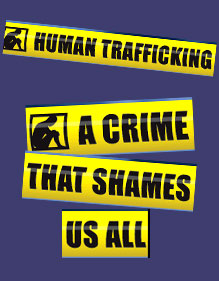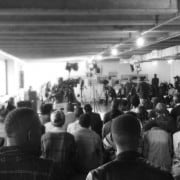|
Getting your Trinity Audio player ready...
|
 South Africa is an important cog in the global human trafficking mechanism – the country is a source, destination and transit point for the trade. According to legal research company LexisNexis, which released its human trafficking awareness index earlier this month, Johannesburg, Pretoria, Bloemfontein and Durban form part of the major routes.
South Africa is an important cog in the global human trafficking mechanism – the country is a source, destination and transit point for the trade. According to legal research company LexisNexis, which released its human trafficking awareness index earlier this month, Johannesburg, Pretoria, Bloemfontein and Durban form part of the major routes.
The 2014 global report on trafficking in persons, published on Monday by the UN Office on Drugs and Crime (UNODC), reveals that sub-Saharan Africa has the highest incidence of child trafficking in the world, and among adults, women are targeted, rather than men. This is in contrast to the standard in regions like the Middle East, where more men are subjected to the illegal trade than women.
What is human trafficking exactly? The UN’s Protocol to Prevent, Suppress and Punish Trafficking in Persons, Especially Women and Children – one of the three so-called Palermo Protocols – defines trafficking in persons as “the recruitment, transportation, transfer, harbouring or receipt of persons, by means of the threat or use of force or other forms of coercion, of abduction, of fraud, of deception, of the abuse of power or of a position of vulnerability or of the giving or receiving of payments or benefits to achieve the consent of a person having control over another person, for the purpose of exploitation.”
Exploitation may be for sexual purposes, for forced labour of various kinds, including soldiering, or for organs, and victims can be any age.
It’s important to note that a person doesn’t have to cross a border to be a victim of trafficking – it’s enough that they are forced into the situation against their will. Human smuggling, therefore, is just one component of trafficking. Cross-border movement is more closely associated with sexual exploitation, according to a 2012 report issued by the International Labour Organisation (ILO), while more people are involved in non-sexual exploitation in their home countries.
It has not been established for definite how many people – ranging in age from toddlers to the elderly – are victims, but the ILO report gives a number of 20.9-million people around the world who are trapped in jobs that they cannot leave.
Corruption is the driving force behind trafficking
Research has shown that the perpetuation of this trade is strongly linked to corruption, yet this link is not fully taken into account when anti-trafficking policies and strategies are drawn up, rendering them less effective.
Corruption can come into play at any stage of trafficking. Anywhere along the line police officers, labour or immigration officials, health workers, NGO staff and others may be prepared to accept a fee to feign ignorance of what is going on.
Transparency International’s 2011 paper on corruption and trafficking illustrates this. In the initial, or recruitment phase, corruption would most likely take the form of buying the silence of government officials in order to protect the recruitment agents. In the second, transit phase, corruption would most likely happen at border crossings if international travel is involved, or by bribing companies for the use of their transport vehicles in the domestic scenario.
In the final, or exploitation stage, police and other officials are bribed to turn a blind eye, so that the brothel owner or employer of trafficked persons can stay in business.
The paper states that only about 10% of offenders are convicted – this is also partly a consequence of corruption, which protects the guilty from prosecution and allows them to launder their profits. “To function, trafficking relies on pay-offs to police, judges and ministers at all levels.”
Corruption in a country is a strong predictor of trafficking
“Labour trafficking is an insidious and often hidden abuse, where victims are rarely identified and few offenders ever held to account. This is also true in the South African context,” says Dr Monique Emser, a research fellow in the Free State University’s department of criminal and medical law. Emser has written two reports on trafficking for LexisNexis South Africa. She agrees that corruption is one of the drivers of the trade.
“The issue of corruption and its link to human trafficking are global,” she says. “We need to start becoming more aware of this and proactive in addressing it in South Africa and regionally.”
The UNODC says that because corruption is rife in everyday life around the world, it blunts the vigilance that should be alerting people to trafficking. “Many people may not even see a difference between obtaining identification documents or a necessary travel paper legally or illegally, as one would be asked for a bribe in either case.”
Until specific steps are taken to account for corruption, anti-trafficking crusaders will be on the losing side. According to the UNODC, “Only after recognising the existence and the effects of corruption in the context of human trafficking, can the challenges posed by it be met.”
Preventive measures must address corruption at all three stages in the trafficking chain, but they must not stop there – there must be awareness of possible corruption during criminal investigations of trafficking, as well as in the protection and assistance of victims.
Emser cites the work of Sheldon Zhang and Samuel Pineda, whose 2008 study tellingly showed that the presence of corruption in a country is a considerably stronger predictor of human trafficking than other poverty-related causes. It is also the only variable that consistently shows a close correlation with the US state department’s annual Trafficking in Persons report (Tip report) – which places countries into one of four tiers according to the extent of their governments' anti-trafficking efforts, rather than the size of their trafficking problem.
In the 2014 Tip report, South Africa is classified as a tier two country – this means that our government does not fully comply with the US Trafficking Victims Protection Act’s minimum standards, but is making efforts to rectify this.
Work to be done in South Africa
The Prevention and Combating of Trafficking in Persons Act (Tip Act), which was signed into law in July 2013 – is the instrument that South Africa uses to fight trafficking. It is the expression of South Africa’s obligation as a signatory of the UN anti-trafficking protocol. South Africa signed the protocol in December 2000 and ratified it in February 2004, and is obliged to define trafficking as a crime and make it punishable by law.
Before the Tip Act, trafficking cases were prosecuted with other offences. The UNODC keeps a database of human trafficking case law – there are just six entries for South Africa, showing the country’s tardiness in successfully isolating and prosecuting trafficking crimes.
“The [South African] government failed to systematically address labour trafficking offenses or successfully prosecute cases against any major international syndicates responsible for much of the sex trafficking in the country,” states the Tip report. “A serious lack of capacity and widespread corruption among the police force stymied progress in anti-trafficking law enforcement efforts.”
This official complicity in trafficking crimes is a serious concern. The Tip report further cites numerous instances of this issue – often involving the police – and also notes that the government has not prosecuted any officials suspected of being involved in trafficking-related crimes.
“As long as human trafficking remains such a profitable crime, and conviction rates and punitive measures remain small, it is unlikely that we will significantly address this crime,” says Emser.
Who are the victims?
In South Africa, as in other countries, trafficking has many faces, and all of them are in that situation because of corruption. Most victims are South African, but the 2014 Tip report mentions victims from Russia, the Philippines, Taiwan, Thailand, Ghana, Somalia, Namibia, Zimbabwe, Zambia, and the US. Thai women are the largest identified foreign victim group.
South African children are trafficked mainly within the borders – they’re recruited from poor rural areas and brought to the urban centres. Here they may be forced into sex trafficking and domestic servitude, if they are girls, while boys have to work as street vendors, food servers, beggars, farm workers or criminal accomplices.
The tradition of ukuthwala, where young girls are forced into marriage, is regarded as a crime under chapter two, section four of the Tip Act. This section states, among others, that any person who concludes a forced marriage with another person, for the purpose of exploitation, is guilty of an offence. South Africa prosecuted its first ukuthwala case in 2013.
The Tip report makes a number of anti-trafficking recommendations for South Africa. As the Tip Act has not yet been promulgated, this is the first thing that needs to be done. Next, government officials must be keenly aware of their responsibilities under the Act and related legal provisions, and must also take care not to treat victims as criminals or hold them responsible.
Other recommendations include standard training in anti-trafficking for all police officials; the provision of tighter security at places of safety; the investigation and prosecution of any official found to be involved in trafficking; and the establishment of formal procedures to include national figures on trafficking cases prosecuted and victims assisted in the crime statistics routinely collected.






